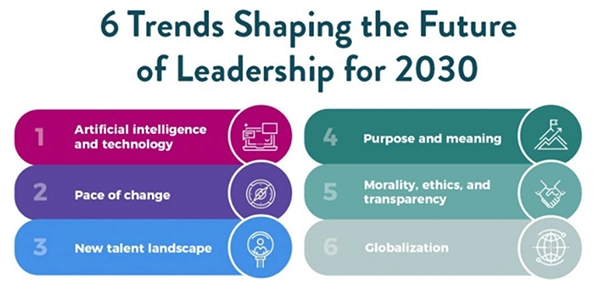
As we all know, in today’s rapidly changing world, educational leaders are essential for navigating technological advancements, evolving educational trends, and preparing students for future challenges. (source)
Everything on this planet has evolved, but if you look closely at the educational spectrum nowadays, it still has some stereotypical and hierarchical norms.
The primary cause of this problem is the shortage of new-age educational leaders and the presence of teachers who continue to teach within their comfort zones, using outdated methods.

So, to shed light on this situation, this blog post aims to provide complete information regarding the role of emerging institutional experts and how their sustainable policies will help to foster excellence and eradicate ambiguity in their constructive learning.
Without further ado, let’s get the balls rolling!
Key Takeaways
- Understanding the pathways to becoming an educational leader
- Decoding the impact of shaping school culture prominently
- Uncovering the importance of supporting teachers
- Looking at some crucial advocacy terminology
- Decoding the future planning of the school
Pathways to Becoming an Educational Leader
Now getting an EdD and becoming a professional expert who has the traits or experiences of becoming a leader is not as it seems. If you are willing to engage in this profession, your past and present qualifications matter the most as you are being hired to train the future graduates or doctoral students.
Regardless of degree achievements or other institutional acclamations, you can still pursue this role if you have obtained something in your life with your grind and strategies that can impact the nature of young minds. For example, it can be a successful startup, a fully acclaimed research, or a life-changing innovation; the thing that is required is how you are going to guide them.
Intriguing Insights

This infographic highlights six pivotal trends that will shape the future of leadership by 2030
Shaping School Culture and Vision
Pursuing this role demands a rebellious mindset that is envisioned to bring about necessary changes to unlock new gateways of learning for students and psychologically shape their knowledge, adapting practices.
The retrospective culture and conservative visionary goals will lead to nothing but a factory of wasted potential. As a leader, it is your responsibility to mold the study regime according to the learner so that they can be more focused on their aspirations.
Supporting Teachers and Staff Development
According to various industry experts and entrepreneurs, constant team support and staff behavior impact leadership qualities the most. One person can make the change, only if their surroundings are willing to take the necessary steps to align with the plan of their leader, and that’s where the convincing power of the captain plays a pivotal role.
Educational reformers can show their roadmaps to the authorities and implement the necessary protocol that can enable discipline and consistency in the daily regime of students.
Driving Student-Centered Change
Making learning more captivating, fun, and practical should be the foremost priority of an educator, as they are meant to be the kingmakers of the emerging talent, and for some, student-centered changes are primarily required.
Every child has their own unique characteristics, and the class schedule or lecture availability should be more inclined towards their routine so that they can learn everything with a clear head and more interest.
Embracing Technology and Innovation
While every industry has taken a major drift towards the usage of digital tools, the education sector is merely adopting them without understanding the true potential of these utilities. Innovations like smart AI-powered dashboards and analytics software will help tutors to evaluate the prognosis of their students and overcome the recurring hurdles in their learning.
Also, the usage of laptops is better than books in some cases, as they can enable better visual insights about the topic through video explanations and 3D models.
Building Community and Parent Partnerships
Looking at today’s interests and latest trends of young bloods, every senior person is trying to build a community that can assess their interests and dislikes to create the best class study environment, which is sustainable and affordable.
And for achieving this, professional leaders need to foster a group of individuals who are envisioned to make radical changes in the conventional institutions. This sect should include parents of the students, members of the teaching community, former students, and those pursuing talents.
Policy, Equity, and Advocacy
Last but not least, professional leaders should ensure that they add new polices that favor academic practices and fairness in the competitive examinations.
This will help in the more comprehensive analysis of the student performance and refining the talents that are outshining others. Also, many leaders guide instructional decisions, support professional development for teachers, and provide clear direction to improve student engagement and academic achievement.
Preparing Schools for the Future
To wrap this segment, we just want to address the importance of the transformation of educational reforms and trainers who still prefer the vintage methods and bookish terminologies.
Humanity is burdened with glorious purposes, and alumni of future generations have to carry its weight to make the environment more advanced and habitable. At last, make sure to read this page to bust any of your recurring doubts, and don’t forget to chase new things every day and strive for more such quality information!
Ans: The four basic, common leadership styles found in education are Authoritarian (Autocratic), Democratic (Participative), Laissez-faire (Delegating), and Transformational.
Ans: Educational leadership is the process of guiding and inspiring teachers, students, and communities to achieve shared educational goals, improve teaching and learning, and foster a positive school culture.
Ans: Although there are different models for the “4 Ps of Leadership,” a prominent one by Harvard Kennedy School focuses on Perception, Process, People, and Projection.